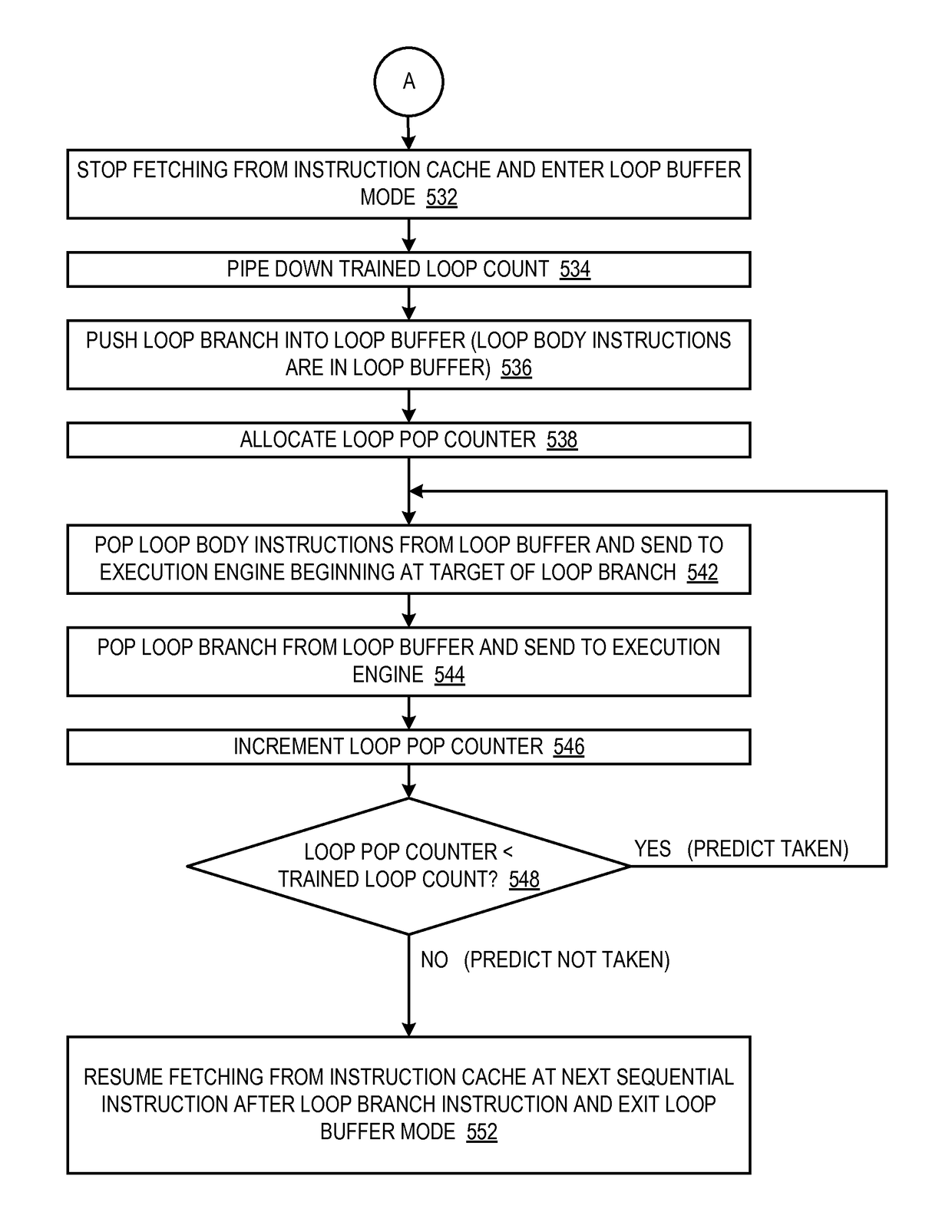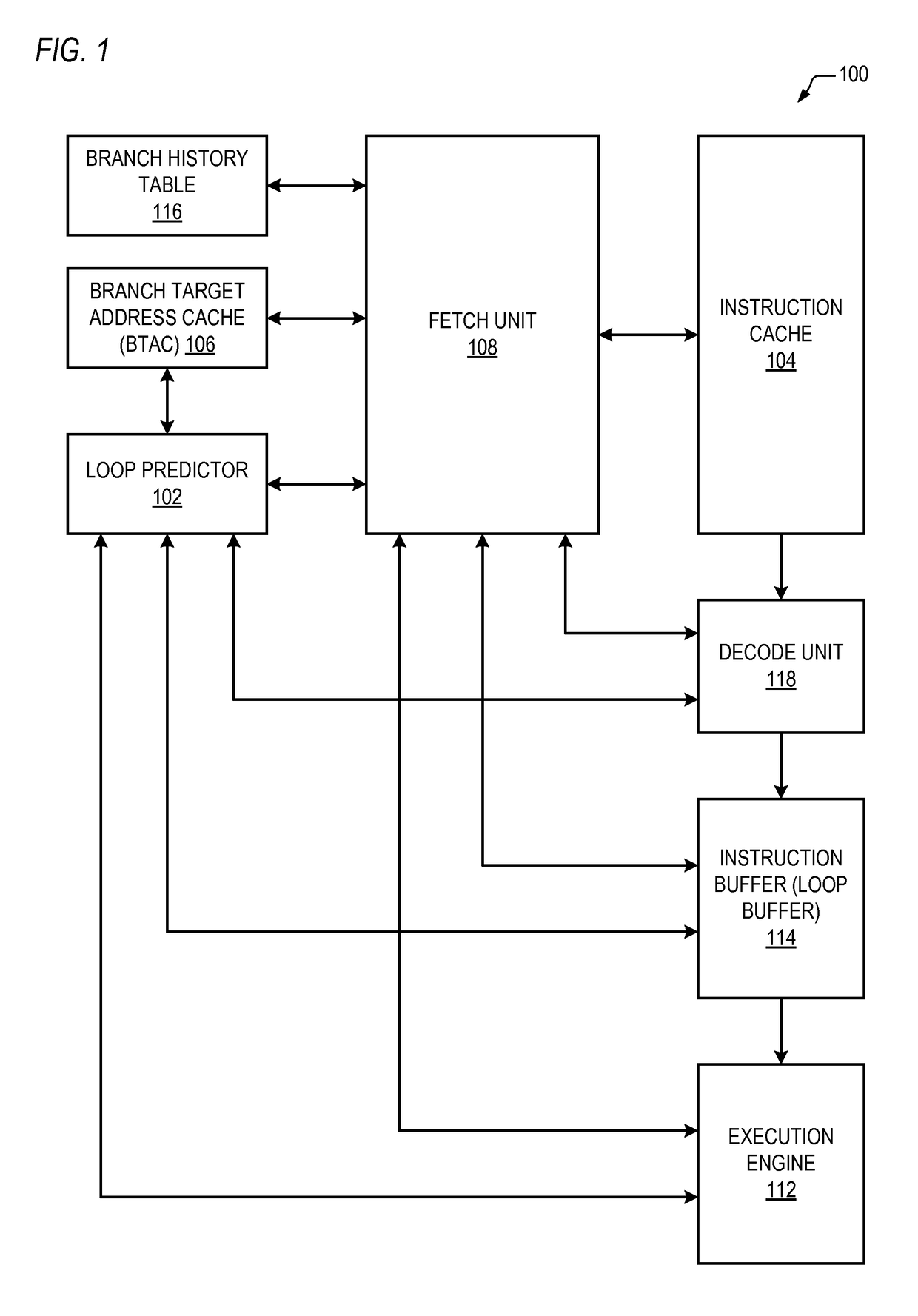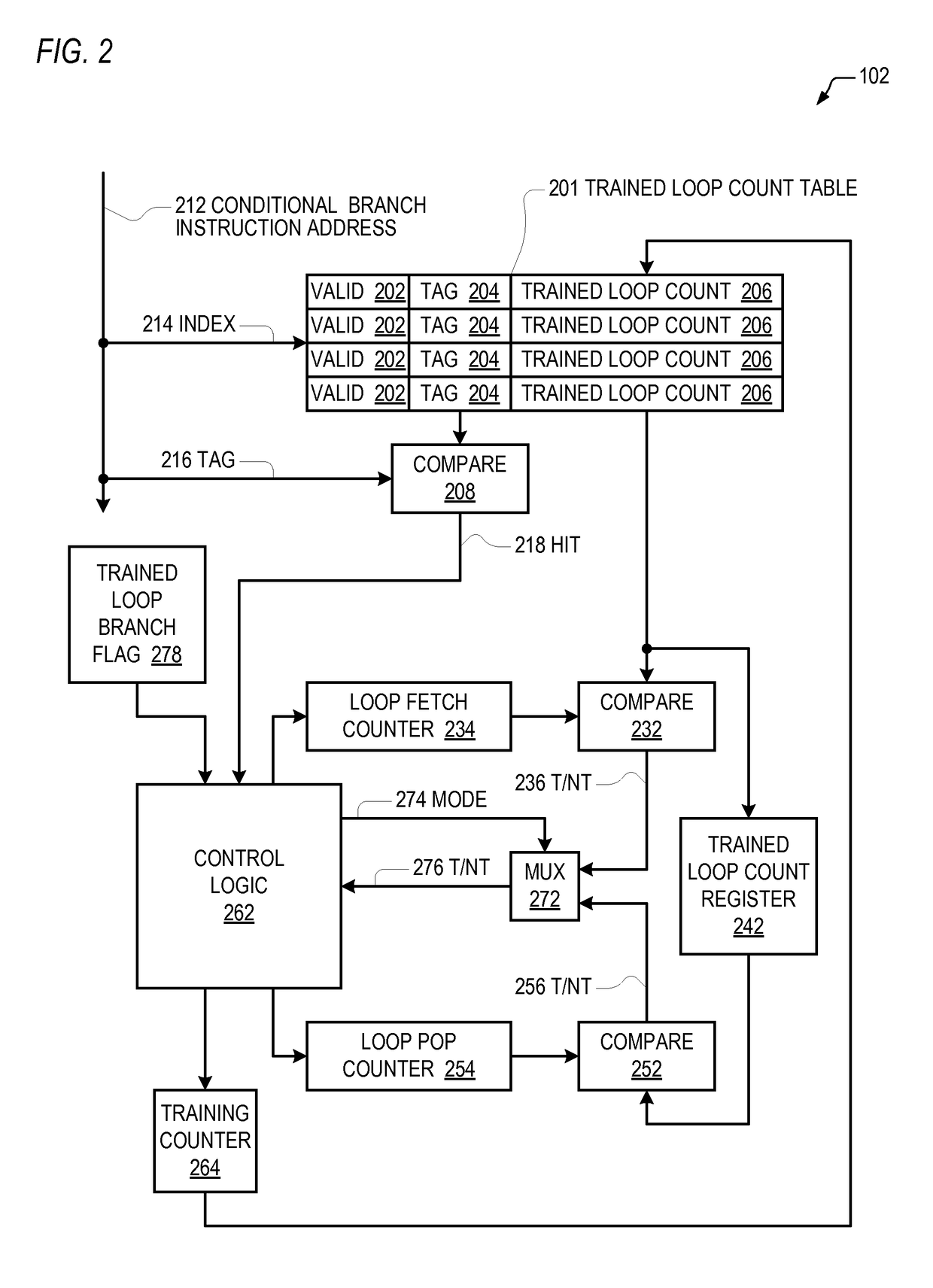Loop predictor-directed loop buffer
a technology of predictors and loop buffers, applied in the field of loop predictors, can solve problems such as pipeline bubbles, power consumption, and potential performance problems of loops
- Summary
- Abstract
- Description
- Claims
- Application Information
AI Technical Summary
Benefits of technology
Problems solved by technology
Method used
Image
Examples
Embodiment Construction
[0016]Referring now to FIG. 1, a block diagram illustrating a processor 100 is shown. The processor 100 includes a fetch unit 108 that controls fetching of instructions from an instruction cache 104 that are provided to an instruction decode unit 118. The decode unit 118 provides decoded instructions to an instruction buffer 114, also referred to herein as a loop buffer 114, which provides instructions to an execution engine 112 for execution. The fetch unit 108 is coupled to the decode unit 118, instruction buffer 114, and execution engine 112. The processor 100 also includes a plurality of branch predictors. In one embodiment, the branch predictors include a branch history table 116, a branch target address cache (BTAC) 106 and a loop predictor 102, each of which is coupled to the fetch unit 108. The loop predictor 102 is also coupled to the decode unit 118, instruction buffer 114 and execution engine 112.
[0017]For purposes of the present disclosure, a loop is a sequence of instru...
PUM
 Login to View More
Login to View More Abstract
Description
Claims
Application Information
 Login to View More
Login to View More - R&D
- Intellectual Property
- Life Sciences
- Materials
- Tech Scout
- Unparalleled Data Quality
- Higher Quality Content
- 60% Fewer Hallucinations
Browse by: Latest US Patents, China's latest patents, Technical Efficacy Thesaurus, Application Domain, Technology Topic, Popular Technical Reports.
© 2025 PatSnap. All rights reserved.Legal|Privacy policy|Modern Slavery Act Transparency Statement|Sitemap|About US| Contact US: help@patsnap.com



